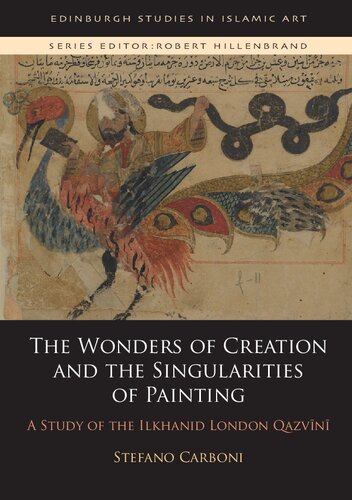

Most ebook files are in PDF format, so you can easily read them using various software such as Foxit Reader or directly on the Google Chrome browser.
Some ebook files are released by publishers in other formats such as .awz, .mobi, .epub, .fb2, etc. You may need to install specific software to read these formats on mobile/PC, such as Calibre.
Please read the tutorial at this link: https://ebookbell.com/faq
We offer FREE conversion to the popular formats you request; however, this may take some time. Therefore, right after payment, please email us, and we will try to provide the service as quickly as possible.
For some exceptional file formats or broken links (if any), please refrain from opening any disputes. Instead, email us first, and we will try to assist within a maximum of 6 hours.
EbookBell Team

0.0
0 reviewsThe subject of this book is the so-called London Qazvīnī, an early 14th-century illustrated Arabic copy of al-Qazvīnī’s The Wonders of Creation and the Oddities of Existing Things, which was acquired by the British Library in 1983 (Or. 14140). As is commonly the case for copies of this text, the London Qazvīnī is lavishly illustrated, with 368 extant paintings out of the estimated original ca. 520.
Its large format, ambitious illustrative cycle and the fine quality of many of the illustrations suggest that the atelier where it was produced must have been well-established and able to attract craftsmen from different parts of the Ilkhanid area. It also suggests that its patron was wealthy and curious about scientific, encyclopedic and cajā’ib literature, and keen to experiment with the illustration of new texts like this work, which had been composed by the author only two or three decades earlier. The only centre that was capable of gathering such artistic influences ranging from Anatolia to Mesopotamia appears to have been Mosul.
The London Qazvīnī is an important newly surfaced document for the study of early illustrated Arabic copies of this text, representing the second earliest known surviving manuscript, as well as for the study of Ilkhanid painting. In a single and unique manuscript are gathered earlier Mesopotamian painting traditions, North Jaziran-Seljuq elements, Anatolian inspirations, the latest changes brought about after the advent of the Mongols, and a number of illustrations of extraordinary subjects which escape a proper classification.